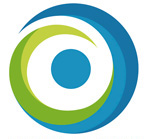
科途公开课:7分钟走近药物研发过程
五一假期刚刚落幕,一则新闻迅速占据人们视野。据悉,2019年5月5日,恒瑞医药PD-1单抗卡瑞利珠单抗已获批上市。截止目前,国内已有5款PD-(L)1抗体获批上市。

药物研发(drug research and development),是一项备受瞩目且充满挑战的巨大工程,常因耗时长、成功率低、投入高而引发业界广泛讨论与反思。科技高速发展,哪些因素迫使药物研发依旧困难重重?药物研发过程中,哪些问题值得关注与深思?来自诺华制药公司的科普视频,生动介绍了药物研发过程。
探寻:从靶点到候选新药
药物研发过程旨在用尽可能短的时间,设计出安全、有效的新型药物。首先,研究者们需要从患者体内疾病相关蛋白质或致病微生物蛋白对应的通路体系中,精准地辨别出治疗或预防疾病的最佳靶点(targets)。找到靶点后,进一步确认该蛋白表达的变化、与其他通路间的相互作用等扰动对疾病的影响,以更好地了解疾病的机制,确定靶点研究的优先次序。
搜寻可以结合靶标的化学或生物制剂通常需要借助高通量筛选(high-throughput screening)或计算机辅助药物设计(CADD)。如果一种化合物能调控靶标、理论上可改变疾病进程,那么这种活性化合物将进一步从安全性及有效性角度考虑加以改进,最终成为候选药物(drug candidate)。
据统计,早期约10,000种活性小分子中可能仅会筛选出一种候选新药。
后期临床前实验——为了更安全的挽救生命
后期临床前实验(late preclinical stage)至关重要,因为此环节中,一些药代动力学特性将通过数据分析出来。虽然可以使用各种实验和计算机辅助,但很多复杂的疾病机制需要最终被要求在动物实验中验证。同时,政府和相关监管部门也往往要求在进行人体测试前进行动物试验,保障临床前数据可靠。研究者们一方面通过改善、减少、替代动物在研究中的使用,确保动物研究是科学的、符合现行标准和法规的;另一方面通过提高标准动物福利,最大程度表达对实验动物生命的尊重与感恩。
科途医学提供的专利类器官技术平台可以为临床前实验提供精准数据,避免更多实验动物的牺牲。刚刚过去的“4·24世界实验动物日”中,科途医学积极参与活动,同时通过全面推广类器官平台,希望挽救更多珍贵生命。
临床试验与市场监管
临床试验计划通常包括四个阶段,每个阶段会从不同角度评估药物的安全性、有效性或疗效。正在进行的临床试验可在www.clinicaltrials.gov查阅。
临床试验第一阶段,药物通常在健康志愿者中测试,以确定其安全性和药代动力学特性;第二阶段,药物在约100到250名患有该疾病的患者上测试,重新评估其疗效,并确定最佳剂量。此外,第二阶段也对药物的安全性和副作用进行评估,同步监测与第一阶段中健康志愿者不一致的结果。一些药物研发公司在第二阶段前也会进行概念验证(Proof-of-Concept,PoC)实验,用候选药物治疗一组病症明确的患者,同步收集第一阶段与第二阶段所需数据,以提供一个早期的指示。第三期临床试验将在更大的临床试验范围测试该药物。单项实验将有1000-3000名患者被招募,为确定新药的有效性与副作用,比较它的药效,收集更多的信息,确保药物被安全的使用。第四期临床实验通常用以收集未在第三期临床中收集的附加数据,例如,功效、安全、附加利益和风险信息,以及药物经济学数据等。
为了让新药进入市场,每种新药均需在药监部门注册。所有临床试验数据收集整理,形成一个叫注册档案(registration dossier)的文件。档案将包括有效性和安全性数据,以证明药物最终的预期用途。该档案将同时定制成世界上不同国家和地区药监部门要求的形式,在世界范围内合规推广。注册档案通过、药物上市后,其他项目也将同步开展。比如,强制性的药品安全性监测,及时更新药监部门要求的安全报告,定时提供年度报告及其他任何信息。只要药物还在市场上,监管工作将持续严格进行。
总结
发现并让一个新药最终进入市场,平均需要耗费14年,花费约二十亿美元。时间、生命、金钱、所有科学家的共同努力,缔造了新药的诞生。我们相信,未来的日子里,随着科技的发展,将会有越来越多的技术融入到新药研发的过程中;也将会有越来越多安全有效的治疗方法,不断提高患者的临床获益。
这是科途医学团队共同的愿景,更是所有奋斗在医疗体系前沿的工作者共同的期盼。
以下是视频原文:
(英文)
In drug research and development, the patient is the main focus. The mission of Novartis is to help the patient overcome a disease and improve their quality of life.
The drug development process is designed to ensure that innovative new medicines are effective, safe and available for patients in the shortest possible time. The first step in drug development is to discover the best targets for treating or preventing a disease. Targets are usually proteins in the patient’s body, which are associated with the disease or proteins in microorganisms causing a disease. The challenge is to identify which proteins are relevant, and more importantly, confirm their role in a disease. Increasingly, Novartis focuses on understanding cellular networks of proteins or pathways. A single protein may transmit messages to several other proteins, sometimes in multiple pathways affecting their function. Knowing how these pathways work and interact helps identify the most appropriate target for a drug. The pathway approach allows Novartis to better understand the mechanisms of a disease. This knowledge together with the desire to address unmet medical needs, determines the priorities in target discovery.
In drug discovery, several methods like high-throughput screening and computer based design are used to find chemical compounds or biologics that bind to the identified target. If a compound modulates the target in a way, that is expected to alter the disease. This so-called hit will be refined to improve its safety and effectiveness eventually becoming a drug candidate. Discovering and bringing one new drug to the market, typically takes an average of fourteen years of research and clinical development efforts, and cost around two billion US dollars. Of 10000 or more hits tested in early drug discovery, only one may eventually lead to a drug that reaches the market.
In the late preclinical stage, further experiments are conducted on the drug candidate. To ensure it is safe for patients and has the required pharmacokinetic properties, like appropriate absorption and metabolism by the human body. These experiments are executed with extraordinary diligence to minimize any risks to human test subjects. Animals play a critical role in the drug discovery process as well. Although much research and development can be done using various experiments or using computers, complex disease mechanisms can often only be understood through the use of animal studies. Also governments and regulatory authorities require that medicines be tested in animals before they are tested in humans. Novartis keeps this research as limited as possible had always ensures that animal research is scientifically acceptable according to current standards and regulations. For these reasons, Novartis continues to use animals in its quest to find innovative safe and life-saving medicines for patients. At the same time, Novartis is committed to refining, reducing and replacing the use of animals in research and upholding the highest standards in animal welfare.
Clinical trial programs consist of several phases. Each of which is focused on evaluating drug safety and effectiveness or efficacy. Information on ongoing clinical trials can be found at www.clinicaltrials.gov. In phase 1 of clinical trials, the drug is usually tested in healthy volunteers to determine its safety and pharmacokinetics. In phase 2, the drug is given to a group of about 100 to 250 patients with the disease. To re-evaluate its efficacy and to determine the optimal dose. In addition, the safety of the drug and its side effects are evaluated as these may be different in patients. Compared to the healthy volunteers tested in phase 1, Novartis also conduct trials called Proof-of-Concept or PoC trials, which are often a mix of phase 1 and phase 2 studies. A group of well-defined patients is treated with the drug candidate to provide an early indication whether it actually affects the target in the intended way or has a beneficial impact on the disease. These studies allow Novartis to rapidly invest resources on drug compounds which are effective and safe. This way the appropriate medicines can reach the patient’s faster. The data from phase 1 and phase 2 studies provide the scientific confidence necessary to continue the development of the compound in larger clinical trials. In phase 3 clinical trials, 1000 to 3000 or even more patients are recruited for research with the investigational drug. Phase 3 clinical trials are undertaken to confirm the effectiveness of the new drug, monitor side effects, compare it to establish treatments and gather additional information to allow the drug to be used safely. To bring a new medicine on the market, every new drug needs to be registered by the health authority. Data from all clinical trials are collected and compiled into a document called registration dossier. The registration dossier will include efficacy and safety data. To support the final intended use of the drug, the dossier is then customized for different regions and countries around the world to meet the requirements of health authorities. This is a crucial step to ensure that patients all over the globe can access the innovative medicines that have made it through the complex drug discovery and development process. Once the registration dossier is approved and the product is launched, several activities will continue, like drug safety monitoring which is mandatory. Post authorization safety updates, annual reports and any additional information required by the health authority must be provided at the find intervals as long as the drug remains on the market. Often, phase 4 clinical trials are initiated to gather additional data not collected in the phase 3 program. This may include efficacy, safety, additional benefit and risk information as well as pharmacal economic data. Our mission is to provide safe and effective treatments that benefit patients and improve the quality of their lives.
·END·




